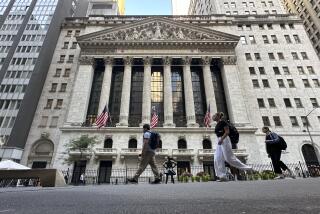May housing construction jumps by 17.2 percent
WASHINGTON — The economy took two steps forward and one step back in May as housing starts picked up but industrial production fell more than expected.
Housing starts jumped higher than expected, as did building permits, offering a glimpse of future building activity. Together both pieces of data suggest that the housing slump may be close to bottoming out and will stop being a drag on the economy.
But the increase in residential building isn’t much help to the ailing manufacturing sector. Production at the nation’s factories and mines fell in May for the seventh straight month, the Federal Reserve said Tuesday, as companies shut plants and demand remained weak.
Industrial production fell 1.1%, after falling 0.7% in April, which was revised downward.
The output of manufacturers and mines has fallen 16 of the last 18 months since the recession began in December 2007, as the housing slump cut demand for furniture, appliances and other big-ticket items, and consumers reined in spending.
The recent bankruptcies of two of the nation’s largest automakers, Chrysler and General Motors Corp., contributed to the drop last month. Both companies shut plants and cut jobs in an effort to streamline their operations and emerge from bankruptcy more competitive.
Analysts had been expecting a fall of about 0.9%. A closely watched index of business activity released this month showed the manufacturing sector contracting, but at a slower pace than in previous months.
The decline in production has resulted in layoffs and shorter work shifts. It also has left machinery and equipment unused, the data show.
The nation’s industrial capacity -- the level of actual activity compared with maximum capability -- fell to a record of 68.3%, the new data showed. In April it fell to 69.1%. A reading closer to 80% is the norm in a healthy economy.
Industrial production and capacity utilization are among the key indicators that Fed policymakers watch. They are scheduled to meet next week to discuss the central bank’s next moves in response to the recession. All eyes are on the Fed to see whether it steps up purchases of long-term Treasuries and mortgage-backed securities to help drive down consumer borrowing costs.
Investors spooked by the potential for inflation once the economy recovers have sold long-term Treasuries, which move in the opposite direction from mortgage rates. Rates for home loans have risen from 5% to about 5.7% in two weeks.
Fed Chairman Ben S. Bernanke has argued that inflation is unlikely to pose a threat as long as demand remains weak and unemployment continues to rise, holding prices and wages down.
Data from the Labor Department released Tuesday appear to back that up. Wholesale prices rose less than expected. Leaving out food and energy prices, which can be volatile, the core producer price index fell 0.1%, compared with expectations of a 0.1% increase.
Over the last 12 months, wholesale prices have dropped 5%, the largest margin in nearly 60 years.
More to Read
Inside the business of entertainment
The Wide Shot brings you news, analysis and insights on everything from streaming wars to production — and what it all means for the future.
You may occasionally receive promotional content from the Los Angeles Times.










